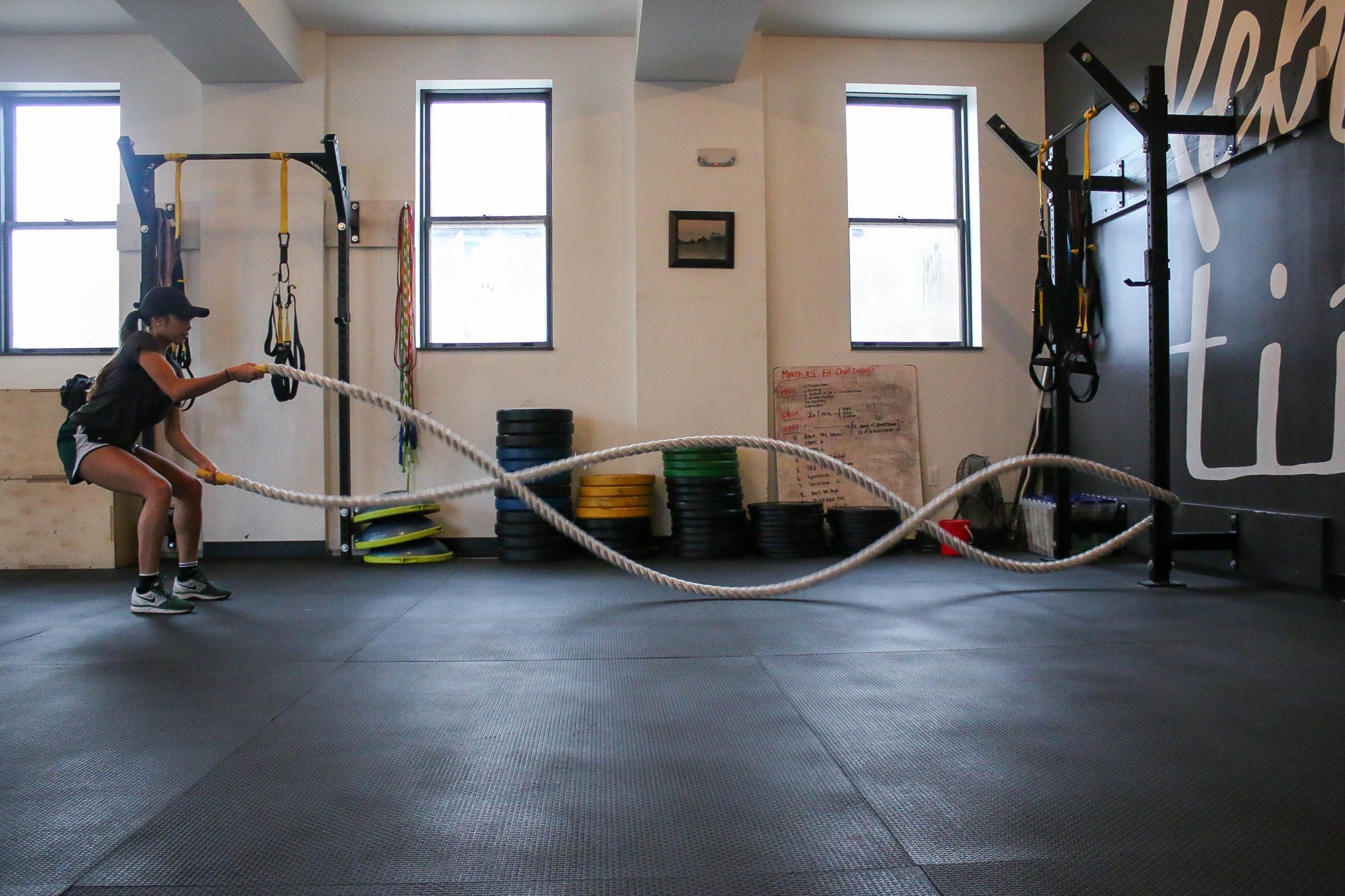The Primary Types of Cardio Workouts Explained
Getting serious with a cardio workout routine is a daunting task. There are several different types of cardio workouts for different types of cardio endurance. Let’s take an in-depth look at the different types of cardio workouts and which ones are best for your training regimen.
The Benefits of Cardio and the Muscle Fiber Continuum
We all know that cardio supports healthy lungs, heart, metabolism and improved oxygen transportation. But did you know that there are different types of cardio muscle activation? It turns out that the nuances of cardio have a tremendous impact on our cardio workout results. There are three main types of muscle fiber ratios that make up the muscle fiber continuum.
Type I or red muscle fibers at the endurance end of the spectrum
Type IIA also red muscle fibers provide ballistic movement over a long period of time (think about jumping rope for 15 minutes).
Type IIX or white muscle fibers at the ballistic movement end of the spectrum
Type I muscle fibers are lean muscles, perfect for those looking to sustain high levels of cardio strength across vast distances (think marathon runners or backpackers), Type IIA uses explosive movement over a long duration of time (like jumping a rope or skiing bumps). The Type IIX muscle fibers are for quick, explosive movements (like a dynamic move in climbing). These two muscle fiber types result in more muscle mass, meant for explosive movement.
Lastly, these different muscle types build on each other, meaning you have to have a Type I base before you develop type IIA strength and so on. This is because you need that Type I muscle endurance to build up joint stabilization. So if you go straight to Type IIX muscle development, you run the risk of blowing out your joints and undergoing an injury. These muscle types are activated through different types of cardio workouts.
Photo by Bruno Nascimento on Unsplash
Steady State Cardio
We are all familiar with Steady State Cardio. It’s the traditional type of cardio workout that is done at a constant, moderate rate. Think about spending 30 minutes on an elliptical. This type of workout is perfect for those looking to build up endurance since it focuses on developing that Type I muscle fiber and lean muscle growth.
You also burn plenty of calories, making this an efficient workout for those starting out. You’ll start to see results in four weeks of steady state cardio training.
Training time: 20 to 60 minutes, twice a week. You can break up 30-minute workouts and higher by using 10-minute intervals.
Intensity: 70-75 percent of your maximum heart rate for your body type and age. This is maintained throughout the entire workout. Think a seven out of 10 on the intensity scale. Best for: Promoting lean muscle growth, endurance, and aerobic capacity. If you’re just getting into cardio workouts, or you’re battling an injury, steady state cardio is your game.
Variable Intensity Interval Training
Variable Intensity Interval Training or VIIT workouts contain intervals of higher intensity with those of lower intensity. Essentially, these types of cardio workouts are designed to allow you to get the strength and cardio you need without sacrificing safety.
These short duration workouts quickly help you gain that oxygen intake ability (VO2 max) and activate those Type IIA and IIX muscle fibers. VIIT workouts are perfect if you’re looking to combine cardio and strength training in one circuit (you can also simply focus on cardio).
VIIT workouts are an excellent choice if you’re looking to build speed and see quicker results but don’t want the injury risk of High-Intensity Interval Training (HIIT). In fact, most HIIT workouts you see are actually VIIT workouts in disguise.
Training time: 30-minute intervals done three to four times per week.
Intensity: Varies. You want a mix of 75 to 80 percent max heart rate with periods of 45 to 50 percent of your max heart rate. Levels should oscillate between five to eight out of ten on the intensity scale.
Best for: Promoting quick bursts of speed, building up muscle mass and lowering injury risk during workouts.
Photo by Element5 Digital on Unsplash
High-Intensity Interval Training
The trending High-Intensity Interval Training (HIIT) workout routines can be dangerous business. This type of cardio workout involves an all-out effort with periods of dead rest in between sets and is strictly cardio, unlike its VIIT cousin. Sure, the workout is shorter, but you’re left with more potential for a game-changing injury.
HIIT workouts, similar to their VIIT cousins, promote maximum oxygen intake, explosive speeds, maximum blood pumping action and muscle mass. Their popularity stems from seeing quick results (think weeks instead of months). However, with such a high potential for injury, it’s best to use these workouts with caution.
Training Time: 10 to 15-minute workouts done only one to three times a week. Never schedule a HIIT workout on back-to-back days.
Intensity: 90% of your maximum heart rate or a nine out of ten on the intensity scale at all times.
Best for: Quick muscle mass and cardiovascular training. If you’re injury prone, recovering from an injury or have week joints, consider HIIT workouts a no-go.
Overall, these three types of cardio workouts will help get you on track. Whether you are recovering from an injury, working to build up muscle or keen on building endurance, there’s a cardio workout for you.


